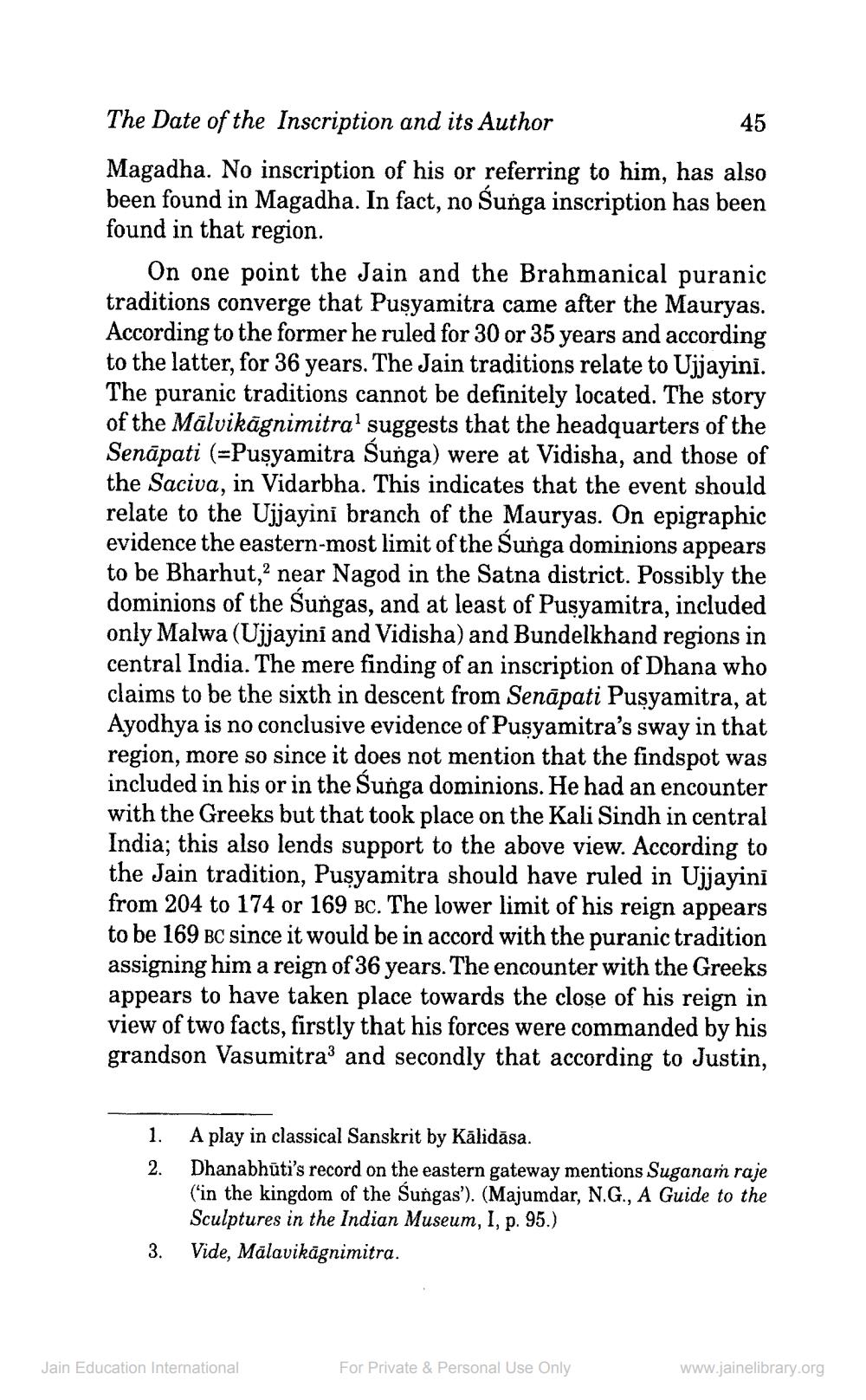________________
45
The Date of the Inscription and its Author Magadha. No inscription of his or referring to him, has also been found in Magadha. In fact, no Šunga inscription has been found in that region.
On one point the Jain and the Brahmanical puranic traditions converge that Pusyamitra came after the Mauryas. According to the former he ruled for 30 or 35 years and according to the latter, for 36 years. The Jain traditions relate to Ujjayini. The puranic traditions cannot be definitely located. The story of the Mālvikāgnimitra' suggests that the headquarters of the Senāpati (=Pusyamitra Sunga) were at Vidisha, and those of the Saciva, in Vidarbha. This indicates that the event should relate to the Ujjayini branch of the Mauryas. On epigraphic evidence the eastern-most limit of the Sunga dominions appears to be Bharhut, near Nagod in the Satna district. Possibly the dominions of the Sungas, and at least of Pusyamitra, included only Malwa (Ujjayini and Vidisha) and Bundelkhand regions in central India. The mere finding of an inscription of Dhana who claims to be the sixth in descent from Senāpati Pusyamitra, at Ayodhya is no conclusive evidence of Pusyamitra's sway in that region, more so since it does not mention that the findspot was included in his or in the Sunga dominions. He had an encounter with the Greeks but that took place on the Kali Sindh in central India; this also lends support to the above view. According to the Jain tradition, Pusyamitra should have ruled in Ujjayini from 204 to 174 or 169 BC. The lower limit of his reign appears to be 169 Bc since it would be in accord with the puranic tradition assigning him a reign of 36 years. The encounter with the Greeks appears to have taken place towards the close of his reign in view of two facts, firstly that his forces were commanded by his grandson Vasumitraand secondly that according to Justin,
1. 2.
A play in classical Sanskrit by Kālidāsa. Dhanabhūti's record on the eastern gateway mentions Suganam raje (in the kingdom of the Sungas'). (Majumdar, N.G., A Guide to the Sculptures in the Indian Museum, I, p. 95.) Vide, Mālavikāgnimitra.
3.
Jain Education International
For Private & Personal Use Only
www.jainelibrary.org




